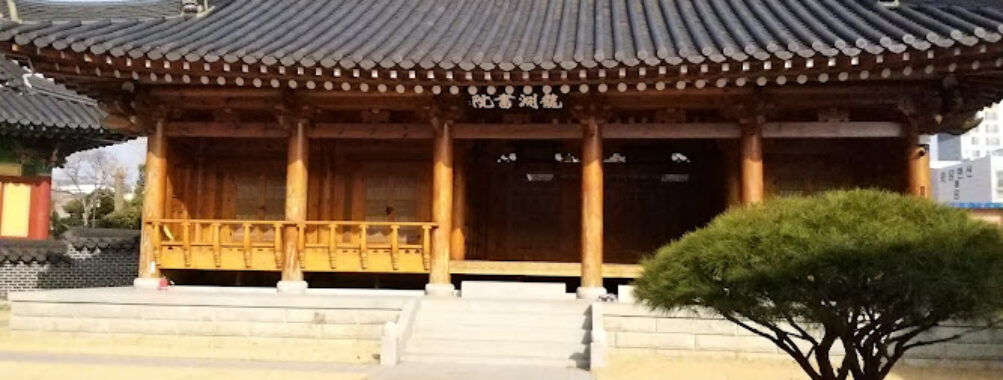
Ihyujeong
Table of Contents Ihyujeong is one of those places that quietly stays in your memory long after you’ve left. It’s not loud or flashy, and that’s exactly what makes it special. This historical pavilion, tucked away in the southern part of Ulsan, feels like a window into another time. The air here carries a kind of calm that’s hard to find in busy cities. You can sense the stories of scholars, poets, and travelers who once stood in the same spot, watching the landscape unfold before them. It’s a place that rewards slow observation—where even the sound of rustling leaves seems to have meaning. What sets Ihyujeong apart is its understated beauty. The wooden architecture, weathered but dignified, holds centuries of history. The structure itself reflects the elegance of traditional Korean design—simple lines, natural materials, and a harmony with the surrounding scenery. You don’t just visit Ihyujeong; you experience it. Whether you’re a history buff, a photographer, or just someone craving a quiet moment, this place has a way of grounding you. And yes, it’s great for kids too. There’s enough open space for them to explore safely, and the historical elements can spark their curiosity about Korea’s past. Now, it’s not perfect—some visitors might find it a bit modest compared to grander landmarks. But that’s part of its charm. It’s not trying to impress; it’s just being itself. I remember sitting on one of the wooden benches, sipping a convenience store coffee, and thinking, “This is the kind of peace you can’t buy.” The view from the pavilion stretches across the landscape, and if you catch it during the golden hour, the light hits the wood in a way that’s almost poetic. It’s a place that invites reflection, not selfies (though you’ll probably take a few anyway). If you’re the type who enjoys peeling back the layers of a place—feeling its history rather than just reading about it—Ihyujeong won’t disappoint. It’s a reminder that history isn’t always grand or monumental; sometimes, it’s quietly waiting for you in the corners of a small pavilion overlooking the hills. Spring and autumn are hands-down the best seasons to visit Ihyujeong. In spring, the nearby trees bloom with soft pinks and whites, creating that postcard-perfect scene that makes you want to linger. Autumn, though—oh, that’s when the place really shines. The fiery reds and oranges of the leaves frame the pavilion like a painting. I’ve visited in both seasons, and while spring feels hopeful and fresh, autumn has this nostalgic, almost cinematic quality to it. Summer can be warm and humid, but if you go early in the morning, you’ll catch a cool breeze and maybe even have the place to yourself. Winter visits are peaceful too, though the mood shifts to something more introspective. Each season gives Ihyujeong a different personality, so it really depends on what kind of experience you’re after. Getting to Ihyujeong is fairly straightforward if you’re traveling within Ulsan. The local buses run regularly, and a short taxi ride from the city center will get you there in no time. If you’re driving, there’s usually parking available nearby, though it can fill up on weekends when families come out for picnics. Personally, I prefer taking public transport—it gives you a chance to people-watch and see a bit more of everyday Ulsan life along the way. The approach to the pavilion is lovely too, with a short walk through a tree-lined path that builds anticipation before you finally catch sight of the structure itself. Just make sure to wear comfortable shoes; while it’s not a tough walk, a bit of uneven ground might surprise you. First off, take your time. Ihyujeong isn’t the kind of place you rush through. Bring a small snack or drink and find a quiet spot to just sit and breathe it all in. If you’re into photography, aim for early morning or late afternoon light—it’s softer and really brings out the textures of the wood and stone. And if you’re traveling with kids, bring something for them to do, like a sketchbook; the scenery is perfect for a bit of creative inspiration. One thing I’ve learned from visiting historical sites like this is that respect goes a long way. Keep your voice low, avoid touching the wooden beams, and be mindful of others who are there to enjoy the peace. Also, check the weather before you go. A little drizzle won’t ruin your visit—in fact, the sound of rain on the pavilion’s roof is oddly soothing—but heavy rain can make the paths slippery. Lastly, don’t forget to look up. The intricate roof details often go unnoticed, but they tell a story of craftsmanship that’s worth appreciating. In the end, Ihyujeong isn’t about grand gestures or flashy attractions. It’s about presence—the kind of quiet presence that makes you slow down and notice the world again. Whether you’re a local looking for a break or a traveler exploring Ulsan’s cultural side, this small but meaningful spot offers something rare these days: a genuine connection to history and to yourself. And honestly, that’s worth the trip.Description
Key Features
Best Time to Visit
How to Get There
Tips for Visiting
Location
Places to Stay Near Ihyujeong
Find and Book a Tour
Explore More Travel Guides
No reviews found! Be the first to review!